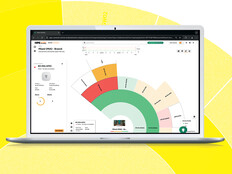Why Wi-Fi 7 Transitions Must Be Holistic
In addition to more throughput, Wi-Fi 7 delivers increased security. Faster speeds could reduce coverage, but a survey can identify any gaps.
Many businesses will probably want to go with multigigabit switches, which push higher speeds through copper.
Wi-Fi 7 APs also require more power, so organizations may need to upgrade their energy infrastructure.
All of these considerations are best addressed with an industry partner at the outset of any modernization project, so the technologies, vendors and pricing can be decided upon upfront.
EXPLORE: What your organization needs to know about Wi-Fi 7 infrastructure.
The Difference Between Wireless Health Checks and Surveys
It’s important to understand the difference between a wireless health check and a survey when considering Wi-Fi 7.
The former consists of basic questions about your environment and whether you’re suited to an in-office or remote setup. It establishes a baseline, inventories existing equipment, maps connections, and identifies hardware that is at its end of life or in need of replacement.
A wireless survey, on the other hand, is generally conducted onsite by your partner. We use Echo software to set up an AP and generate a computer-aided design of all locations. A wireless heat map is then created that shows where you will get full wireless coverage versus where there will be problems with attenuation or interference.
Once the survey is complete, we partner with you to run wire where APs will be mounted.
We recommend that most businesses go with Wi-Fi 7 over Wi-Fi 6E because while both use the same 6GHz band, Wi-Fi 7 has increased bandwidth. That said, businesses that have seen their budgets or personnel downsized recently may understandably not be able to afford the newest hardware and may prefer the Wi-Fi 6E option.










